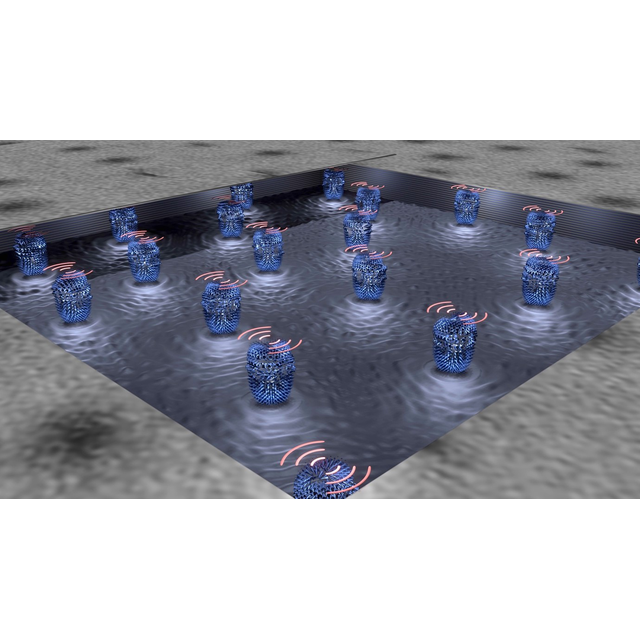Physicists from the Centre for Nanoscience and Nanotechnology (C2N), along with their colleagues in France, have uncovered a new method to generate spin waves using nanoscale particles known as skyrmions within a ferromagnetic material. Their findings, recently published in the journal APL Materials, pave the way for exciting new possibilities in information technologies.
Skyrmions, magnetic phenomena exhibiting whirl-like formations that range from tens to hundreds of nanometres in size, have recently been the focus of a significant amount of research due to their potential for data storage applications. These microscopic structures, resembling tightly woven knots, respond to external forces such as electric currents, moving in a manner similar to particles.
In addition to this particle-like behaviour, skyrmions have the ability to rotate like spinning tops and vibrate akin to guitar strings - a process observed at frequencies in the gigahertz range and above. These 'gyration' and 'breathing' modes become especially pronounced when skyrmions form dense arrays, allowing their vibrations to be detected through experiments such as ferromagnetic resonance.
A collaboration between the Centre for Nanoscience and Nanotechnology (CNRS, Univ. Paris-Saclay, Univ. Paris Cité), Service de Physique de l’État Condensé (CEA, CNRS, Univ. Paris-Saclay), and Unité Mixte de Physique (CNRS, Thales, Univ. Paris-Saclay), has shed new light on these fascinating structures. The research team has demonstrated that under certain conditions, skyrmions in multilayered magnetic materials can emit spin waves, ripples within a magnetic system that are being actively explored for use in data transmission and processing.
The team discovered that constructing multilayers of nanometre-thick ferromagnetic iron-rich films with platinum and aluminium oxide causes skyrmions to form inner cores resembling three-dimensional pills, as opposed to the perfect cylinders seen in two-dimensional systems. Remarkably, these cores resonate in sync when exposed to radiofrequency magnetic fields, generating spin waves that ripple into the surrounding material, akin to the effect of periodically plunging a collection of buoys in a body of water. Simulations suggest these ripples can have wavelengths as low as 50 nm, illustrating the potential of skyrmions to convert uniform radiofrequency waves into nanoscale excitations.
This groundbreaking research opens new doors to studying nanoscale spin wave phenomena, which are typically difficult to examine in standard laboratory conditions. The scientists are optimistic that these skyrmions may act as effective wave transducers in magnonic circuits, bridging the divide between the macroscopic world and the nanoscale.
Reference
Resonant dynamics of three-dimensional skyrmionic textures in thin film multilayers Editor’s Pick
Titiksha Srivastava1, Yanis Sassi1, Fernando Ajejas1, Aymeric Vecchiola1, Igor Ngouagnia Yemeli2, Hervé Hurdequint2, Karim Bouzehouane1, Nicolas Reyren1, Vincent Cros1, Thibaut Devolder2, Joo-Von Kim2, Grégoire de Loubens1
APL Mater 11, 061110 (2023)
https://doi.org/10.1063/5.0150265
Affiliations
1Unité Mixte de Physique, CNRS, Thales, Université Paris-Saclay, 91767 Palaiseau, France
2SPEC, CEA, CNRS, Université Paris-Saclay, 91191 Gif-sur-Yvette, France
3Centre de Nanosciences et de Nanotechnologies, CNRS, Université Paris-Saclay, 91120 Palaiseau, France
Contact : Joo-Von Kim
Figure : Spin wave ripples generated by resonating three-dimensional magnetic skyrmions in thin film multilayers. (© JV Kim, C2N)









